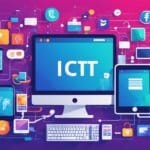Table of Contents
Access to technology and the internet has become an essential aspect of modern life. However, not everyone has equal access to these resources, leading to a phenomenon called the digital divide. Understanding digital divide means acknowledging that certain individuals and communities have less access to technology and connectivity than others, resulting in inequities in education, job opportunities, healthcare, and social inclusion.
Key Takeaways
- The digital divide refers to the lack of equal access to technology and the internet for certain individuals and communities.
- The digital divide can cause significant impacts on education, job opportunities, healthcare, social inclusion, and economic development.
- Bridging the digital divide requires collective efforts from governments, non-profit organizations, and the private sector.
- Infrastructure development, affordable internet access, digital skills training, and community empowerment are among the strategies for narrowing the digital divide.
- Digital equity and closing the gap in connectivity and access can lead to long-term benefits for society as a whole.
The Impacts of the Digital Divide
The consequences of the digital divide extend far beyond limited access to technology and the internet. It affects different aspects of society, with significant impacts on education, job opportunities, healthcare access, social inclusion, and overall economic development.
One of the most significant impacts of the digital divide is in education. Without access to technology and the internet, students are at a disadvantage in terms of research, access to resources, and distance learning opportunities. In fact, research has shown that students from low-income families are significantly less likely to have access to technology and the internet at home, resulting in lower academic achievement and decreased likelihood of further education.
The digital divide also affects job opportunities, as many jobs today require digital skills and internet access. Without these skills and resources, individuals are unable to compete in the job market, thereby limiting their prospects for financial stability and upward mobility.
In addition, the digital divide has significant implications for healthcare access. With the increased use of telemedicine and online healthcare resources, individuals without access to technology and the internet face significant challenges in accessing healthcare services and resources.
Social inclusion is also affected by the digital divide, as individuals without access to technology and the internet are less likely to participate in social and civic activities. This lack of participation can lead to exclusion and isolation, limiting individuals’ opportunities for community engagement.
Ultimately, the digital divide has a significant impact on economic development, with limited access to technology and the internet leading to decreased productivity and competitiveness for individuals and communities.
Real-World Examples and Statistics
Statistics from the Office of National Statistics show that 7% of households in the UK do not have internet access, with these individuals disproportionately from deprived areas. In the US, as of 2019, 46% of households with incomes less than $30,000 per year did not have home broadband services.
A study by the Education Policy Institute found that students from disadvantaged backgrounds in the UK were more likely to experience a ‘digital disadvantage’ due to limited access to technology and the internet. Another report by the World Economic Forum estimates that bridging the digital divide could increase global GDP by $13 trillion.
“The digital divide is not just a technology issue; it’s also a social justice issue.”
Strategies for Bridging the Digital Divide
In order to bridge the digital divide, various initiatives have been taken by governments, non-profit organizations, and private sector entities to enhance connectivity and digital literacy. These strategies can be broadly grouped into four categories:
- Infrastructure Development: Better internet infrastructure is the first step towards bridging the digital divide. Governments and private sector entities can invest in laying down high-speed fiber-optic cables, establishing public Wi-Fi networks in rural and remote areas, and expanding mobile broadband coverage. These measures can help provide equal access to high-quality internet connectivity, regardless of geographical location.
- Affordable Internet Access: The cost of internet services can be a major barrier to digital inclusion. To address this, governments can offer subsidies on internet fees or regulate internet service providers to ensure affordable rates. Non-profit organizations can work towards establishing community-owned internet service providers that provide low-cost internet services to underserved areas. Private sector entities can invest in providing innovative financing models that allow people to pay for internet services in installments.
- Digital Skills Training: Digital literacy is essential in today’s world, and lack of access to digital skills and knowledge can widen the digital divide. Governments, non-profit organizations, and private sector entities can work together to provide digital skills training to marginalized communities. This can include training on basic digital skills such as online browsing, using e-mail, and social media, as well as advanced digital skills such as programming, digital marketing, and data analytics.
- Community Empowerment: Bridging the digital divide is not solely the responsibility of governments and non-profit organizations. Communities also have a role to play in achieving digital equity. Communities can develop their own digital solutions that cater to their specific needs, establish digital community centers that provide access to technology and digital skills training, and advocate for digital inclusion policies.
Successful case studies and best practices have been developed across the world that have effectively bridged the digital divide. One such example is the Mexican government’s approach to constructing a shared telecommunications network, which has significantly reduced internet costs and improved internet access in underserved areas.
“Narrowing the digital divide is not only crucial for individuals and communities to thrive, it is vital for creating a more equitable and just society for all.”
Conclusion
In conclusion, it is evident that the digital divide is a critical issue that affects various aspects of society. The unequal distribution of technology and internet connectivity has far-reaching consequences on education, job opportunities, healthcare access, social inclusion, and overall economic growth.
To bridge the digital divide, governments, non-profit organizations, and private sector entities must collaborate and implement practical solutions. Key strategies include infrastructure development, affordable internet access, digital skills training, and community empowerment. By narrowing the digital divide, we can ensure equal opportunities for all and achieve digital equity.
In summary, the digital divide must be addressed to prevent further marginalization and ensure that everyone has access to the resources and opportunities provided by digital technology. It is time to take action and work towards narrowing the digital divide for a more equitable and inclusive society.
FAQ
What is the digital divide?
The digital divide refers to the unequal access to technology and internet connectivity between different individuals and communities.
What are the impacts of the digital divide?
The digital divide has significant consequences in various aspects of society. Limited access to technology and the internet can affect education, job opportunities, healthcare access, social inclusion, and overall economic development.
How can the digital divide be bridged?
Bridging the digital divide requires practical solutions and strategies. This includes initiatives such as infrastructure development, affordable internet access, digital skills training, and community empowerment. Governments, non-profit organizations, and private sector entities play a crucial role in narrowing the digital divide.
How does the digital divide affect individuals and communities?
The digital divide creates barriers for individuals and communities, limiting their access to information, educational resources, job opportunities, and essential services. This can result in social exclusion and perpetuate inequality.
Why is it essential to bridge the digital divide?
Bridging the digital divide is crucial to ensure equal opportunities for all. It promotes inclusivity, empowers individuals and communities, and contributes to overall societal and economic development.













